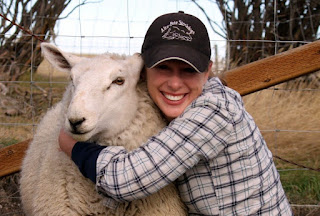
As someone who is miserable when it comes to cold temperatures (my definition is anything below 70 degrees), I’ll let you in on a secret that has allowed me to enjoy running in sub-freezing temps: Merino wool. Perhaps this is old news to you veteran runners and I’m just late to the party..er..race, but I only had to wear this magical fabric once during a blustery run to know I’d never return to synthetic athletic wear during these frosty, frigid New York months.
The idea of wool might conjure up images of itchy sweaters and thick, uncomfortable socks. Or maybe you picture fluffy sheep and grandma’s knitting. For me, the thought elicits memories of my curly hair … before I discovered keratin!

Regardless, wool can provide warm and comfortable thin base layers, mid-layers, outerwear, and socks. But not just any wool—Merino wool, straight from the Merino sheep. Ditch the itch! Not only is the fiber on Merino sheep very fine, it is also quite soft, more so than any other wool from any other breed of sheep.

As a cold-weather convert, here are my top reasons to give Merino a try … especially if you, too, are a cold-averse runner.
- You will feel dry. Who wants to be freezing and wet? Merino wool wicks moisture and makes a great base layer. Your wool top will not stick to your body; nor will you feel gross and clammy when you start to sweat. Plus, in the event you get stuck in a torrential rainstorm or if you happen to be a profuse sweater, Merino wool dries quickly.
- You won’t smell. Your friends, teammates, and even fellow subway car passengers will thank you! Unlike some other fabrics, Merino wool doesn’t hold odor. This is due to the fabric’s ability to absorb sweat quickly, which allows the dampness to evaporate.
- You will feel warm. Merino wool absorbs and releases moisture as needed, so that when you wear clothing made of Merino wool, its natural properties let you feel warm in the cold (and, conversely, cool when it’s hot).

- Good for environment, sun protection, and stopping static. Merino wool is more sustainable, making it better for the environment than many other fabrics; it provides SPF protection; and it is static-resistant.
- It’s durable. You may wonder if it’s worth the price tag. There’s always a catch, isn’t there? The one downside to Merino is the upfront cost, but luckily, you get what you pay for.
- I’ve purchased Merino wool pieces that have lasted more than a decade of winter running and they still look brand new. That’s a pretty compelling return on investment. My personal favorite brands are Ibex and Smartwool, both of which often run good sales. (Disclosure: I do not work for either company.)

Personally, embracing gear made from Merino wool has transformed me from winter-phobic to one who truly enjoys a cold-weather run. Remember, when it comes to running conditions, there’s no such thing as bad weather; you just need the right apparel to keep you on track. ????
-Melissa S.
